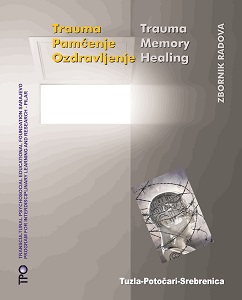Skulpture zaboravljenih sjećanja
The Sculptures of Forgotten Memories
Author(s): Adis Fejzić
Subject(s): Museology & Heritage Studies, Politics of History/Memory
Published by: Transkulturna Psihosocijalna Obrazovna Fondacija (TPO Foundation)
Keywords: sculpture; remembrance; Bosnia and Herzegovina;
Summary/Abstract: Within the proposed framework of Trauma, remembrance, recovery, I contextualise and analyse visual art. Beginning from de Botton’s and Armstrong’s definitions of art as a therapy, I continue on to emphasise the importance of remembrance as one of the basic functions (and contents) of art in general. I (re)define the general and special place that art can (and should) have, but with an emphasis on the commemorative sculpture (the so‐ called Memorials in Bosnia and Herzegovina and ex‐Yugoslavian territories). The focus is on the following areas: the Art of Stećak, monuments commemorating the Second World War, as well as those commemorating the most recent war in Bosnia and Herzegovina in the 90s. Stećaks and the Second World War Monuments are connected through their mutual belonging to the pluralistic and humanistic spirituality from which they were both "born", with the distinction of the latter ones being the product of the declarative atheist discourse. I understand the nearly destroyed principle of the common multidimensional identity and life in the Southern‐Slav (Yugoslavian) territories as the crown‐quality of Bosnia and Herzegovina, but also as a forgotten remembrance. The authentic, multidimensional Bosnian and Herzegovinian spirit, instead of being the major export product becomes the idea that the European Union hypocritically falsifies and sells "re‐packaged and recycled" to contemporary, traumatised Bosnia and Herzegovina. Within the same theoretical framework, under the name of A(dis)continuity and/or resurrection of the Art of stećak, I present some of my own sculptures that have been thought out through the (forgotten) remembrance as a result of my doctoral research of the Art of Stećak to‐date. This extinguished tradition, and its five centuries long discontinuity, I turn into A(dis)continuity and I enliven it as my own artistic creation and metaphor. I find parallels between the complex format and meaning of Stećak and the Bosnian and Herzegovinian multidimensional identity, which in itself could almost be a pseudonym for cosmopolitism. By doing this, I once again underline the importance of remembrance in relation to the greatest humanistic values of the shared collective life of the diversities existing in Bosnia and Herzegovina, which should be continuously transfused into hope that is a beacon to the healing from the trauma and towards a better and healthier future.
Book: Trauma, pamćenje, ozdravljenje
- Page Range: 119-134
- Page Count: 15
- Publication Year: 2014
- Language: Bosnian
- Content File-PDF

